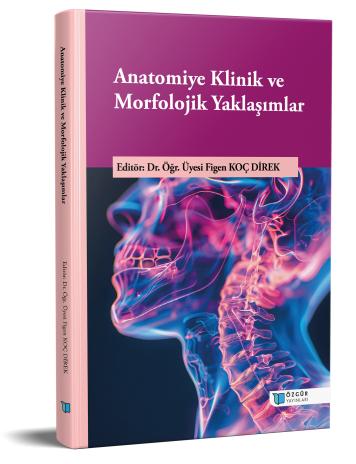
Temporomandibular Eklem ve Klinik Anatomisi
Şu kitabın bölümü:
Koç Direk,
F.
(ed.)
2024.
Anatomiye Klinik ve Morfolojik Yaklaşımlar.
Özet
Temporomandibular eklem (TME), çene hareketlerini sağlayan ve stomatognatik sistemin merkezinde yer alan çift işlevli bir eklemdir. Mandibula ile os temporale arasında yer alan TME, rotasyonel (ginglimoid) ve translasyonel (artrodial) hareketlere olanak tanır. Eklem yüzeylerini ayıran discus articularis, sürtünmeyi azaltarak eklem stabilitesini sağlar ve mandibular hareketleri düzenler. Eklem kapsülü, ligamentum temporomandibulare (ligamentum laterale), ligamentum sphenomandibulare ve ligamentum stylomandibulare tarafından desteklenir. Bu ligamentler, eklemi stabilize ederek aşırı hareketleri sınırlar.
TME’nin işlevsel bütünlüğünde, musculus masseter, m. temporalis, m. pterygoideus lateralis ve m. pterygoideus medialis gibi kaslar görev alır. Eklem, n. trigeminus’un nervus mandibularis dalından köken alan n. auriculotemporalis ve n. massetericus tarafından innerve edilir. Kanlanması ise a. carotis externa’nın dalları olan a. maxillaris ve a. temporalis superficialis aracılığıyla sağlanır.
Anatomik karmaşıklığı nedeniyle TME, discus articularis dislokasyonları, osteoartritis, myofascial ağrı sendromu ve ankylosis gibi patolojik durumlara yatkındır. Bu bozukluklar, ağrı, mandibula hareketlerinde kısıtlılık ve eklem sesleri gibi semptomlara neden olarak yaşam kalitesini olumsuz etkiler.
Bu kitap bölümü, TME’nin anatomik yapısını, biyomekanik özelliklerini, ilişkili kas ve ligament yapılarını detaylı olarak ele alarak, normal fonksiyonların ve patolojik durumların anlaşılmasına katkıda bulunmayı amaçlamaktadır. Ayrıca, klinik önemine ve uygun tedavi stratejilerine vurgu yaparak temporomandibular bozuklukların yönetiminde yol gösterici bir kaynak sunmaktadır.

